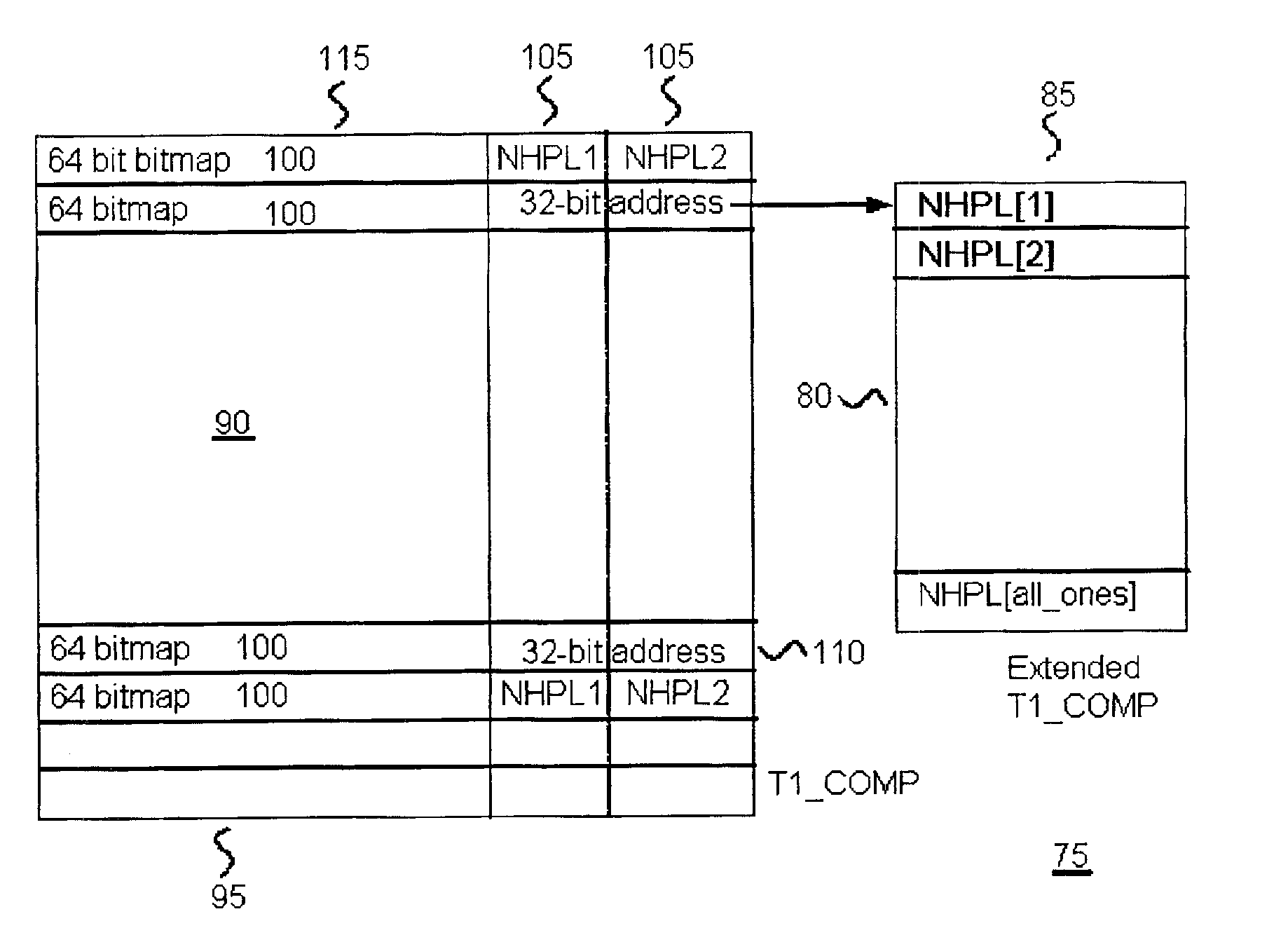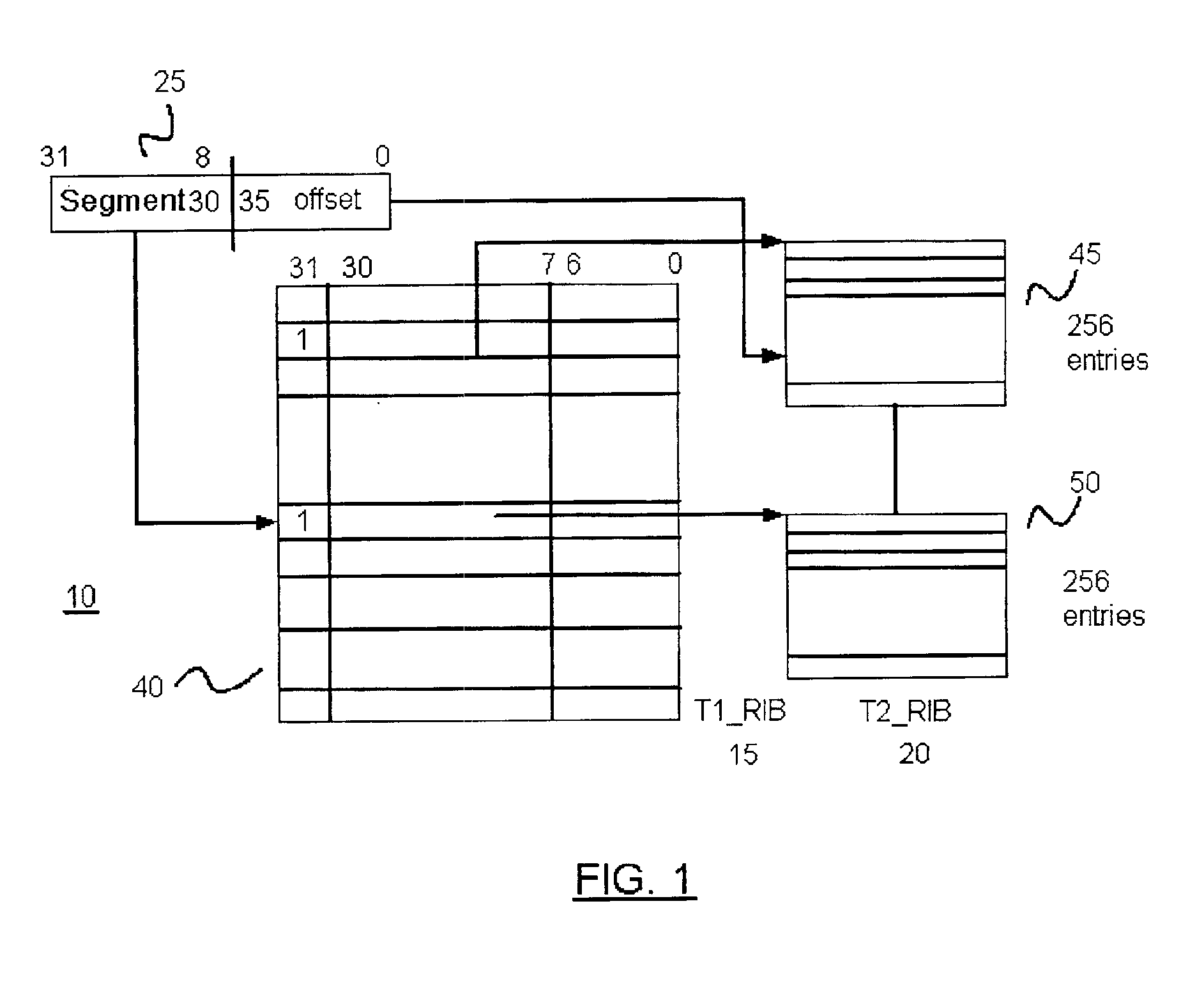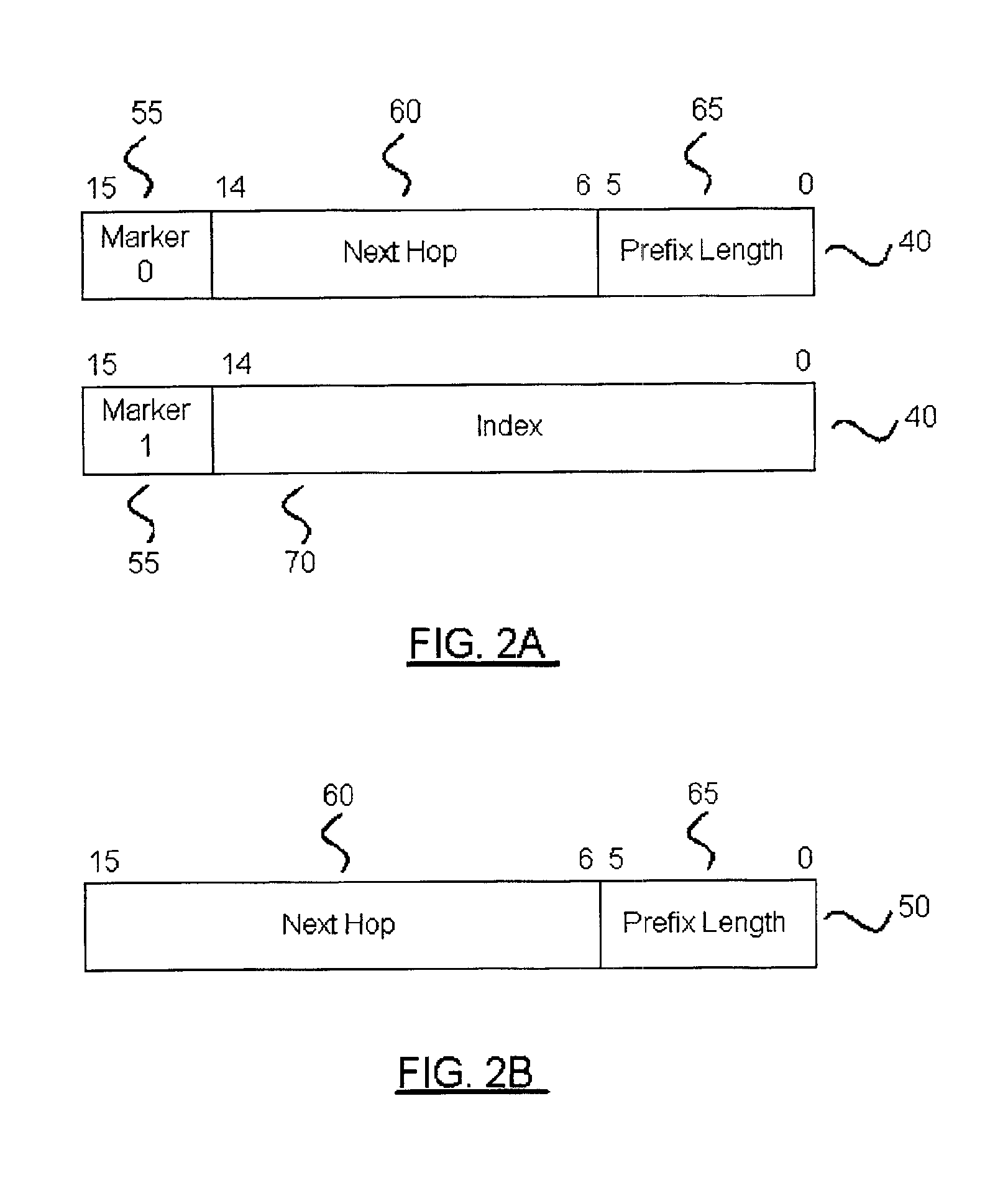Fast IP route lookup with configurable processor and compressed routing table
a routing table and processor technology, applied in the field of routing messages in communication networks, can solve the problems of low efficiency, difficult to change or upgrade to accommodate new features, poor performance, etc., and achieve the effect of reducing memory requirements and equaling costs
- Summary
- Abstract
- Description
- Claims
- Application Information
AI Technical Summary
Benefits of technology
Problems solved by technology
Method used
Image
Examples
case 1
[0082] prefix_length≦18—Here, there is no need to change the bitmap (100). The reason is that for this case is that the IP address as determined by the prefix length matches the entire bitmap (100). This implies that dim(NHPL) is not changed. Only the contents of the NHPL array (80) may need to be updated.
[0083]For example, suppose the initial routing table is empty. For a first route update (128.0.0.0 / 8 / 1), the technique updates the T1_COMP (90) entries from 128.0.0 to 128.255.3, a total of 1024 entries. The bitmap (64) in these entries will remain the same, i.e., 0×8000000000000000), but the NHPL array is changed to NHPL[1]=1 / 8 (next hop / prefix length). For a second route update (128.3.0.0 / 16 / 2), the T1_COMP (90) entries from 128.3.0 to 128.3.3, a total of four entries, are updated. The bitmap (64) will be unchanged. Here, there is only a need to update the NHPL associated with these matched entries with NHPL[1]=2 / 16 since the second route is more specific than the first route.
[00...
case 2
[0086]181_COMP (90) (S524). For the matched entry, it may match one or more bits in the 64-bit bitmap (100) (S526). For example, for prefix_length=24 the IP address matches exactly one bit in the bitmap (100). For prefix_length=20, it matches 224-20=24=16 bits in the bitmap (100). For each matched bit, it is necessary to walk through the bitmap (100) from left to right (S526) (alternatively, a method can be implemented which considers blocks of bits in the matched bitmap, rather than one bit at a time) and see whether there is a need to change the bitmap (100) based on various conditions. If the marker bit in the old NHPL is zero (S532), additional cases should be considered. The bitmap (100) and NHPL array need to be updated (S538) if the new address is more specific than the old address (S534), i.e., if the old prefix length (65) is less than or equal to the new prefix length (65), and the new NHPL is distinct from the old NHPL stored in the table (80) (S536).
[0087]Let P, C, and F...
case 3
[0091] prefix—length>24—In this case, the new route will match exactly one entry in T1_COMP (90) and one bit in the 64-bit bitmap (100). It is only necessary to update the bitmap (100) and NHPL array (80) if the old prefix length (65) is less than or equal to the new prefix length (65) and the new NHPL is distinct from the old NHPL stored in the table. If the marker bit in the old NHPL is zero (S548), it is necessary to get a new distinct index in the range from zero to 32,767 (which has not been used in T1_COMP (90)) (S550), store it in the entry at T1_COMP (90) and set the mark bit to one (S550). The index will point to a region of T2_RIB (20) with 256 entries. Unmatched T2_RIB entries (50) are filled with the old NHPL stored in the T1_COMP (90) entry while the remaining matched T2_RIB entries (50) are filled with new NHPL. All the cases listed in TABLE 5 should be considered (S552). It is necessary to update the bitmap (100) and NHPL array (80) based on the bit pattern of the ...
PUM
 Login to View More
Login to View More Abstract
Description
Claims
Application Information
 Login to View More
Login to View More - R&D
- Intellectual Property
- Life Sciences
- Materials
- Tech Scout
- Unparalleled Data Quality
- Higher Quality Content
- 60% Fewer Hallucinations
Browse by: Latest US Patents, China's latest patents, Technical Efficacy Thesaurus, Application Domain, Technology Topic, Popular Technical Reports.
© 2025 PatSnap. All rights reserved.Legal|Privacy policy|Modern Slavery Act Transparency Statement|Sitemap|About US| Contact US: help@patsnap.com



